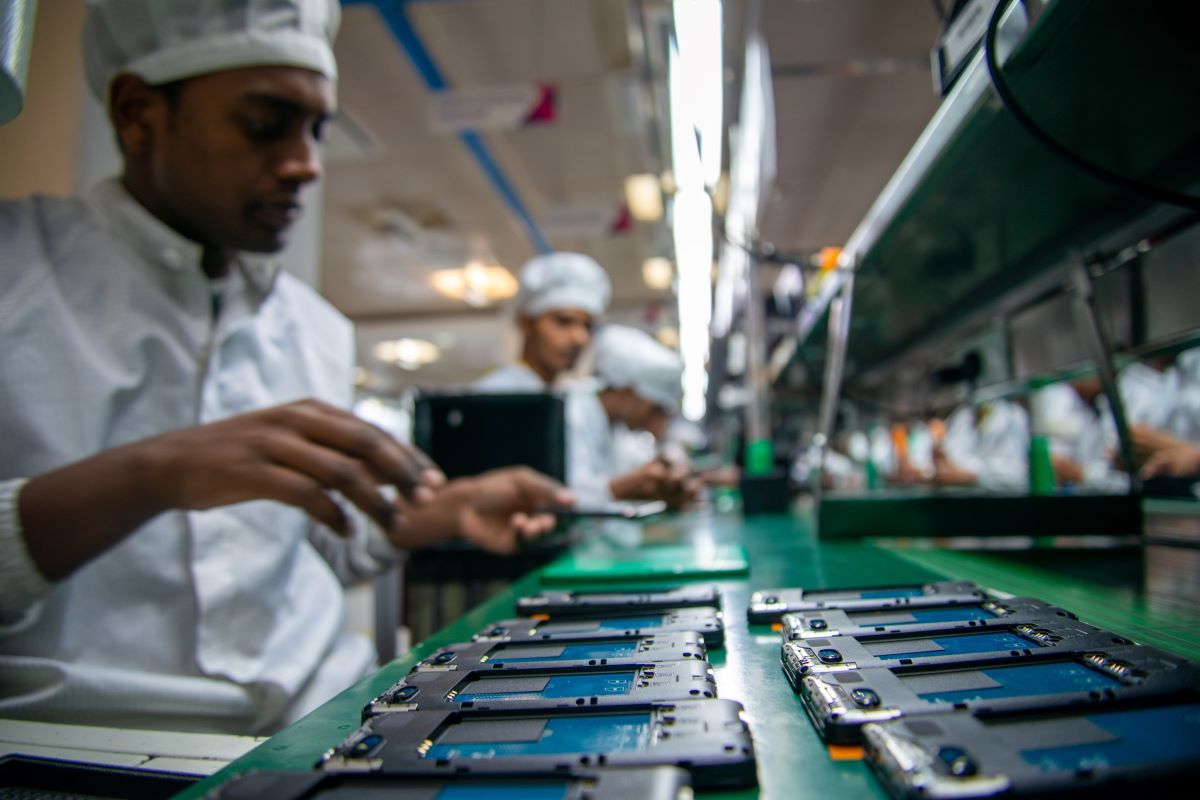India’s manufacturing sector is expanding by the day and is now competing with China in the smartphone space as Apple has announced that it will manufacture its upcoming iPhone 14 in India. The rising mobile manufacturing in India has now helped the country to become the world’s second-largest smartphone producer.
Earlier this week, India’s top planning agency Niti Aayog’s CEO Amitabh Kant in a statement said that over 200 manufacturing units are present in the country, up from just two units back in 2015. India’s mobile phone production volume has gone up from 60 million in 2014-15 to 300 million in 2020-21, Kant said in a tweet.
Aiding mobile manufacturing in India
India has been stepping up electronics manufacturing through a range of policy measures such as production-linked incentives (PLI). The Ministry of Electronics and Information Technology in collaboration with the India Cellular and Electronics Association (ICEA) recently released a report titled ‘$300 bn Sustainable Electronics Manufacturing & Exports by 2026’. The document explores the current electronics market and the production projections for different electronic items that will help India become a $300 bn electronics manufacturing powerhouse.
The Narendra Modi-led government envisions India making electronics among its top 3 exports by 2025-26. Among the different products, mobile manufacturing in India is in focus as the country aims to scale the production value from the current $30 bn to $126 bn by 2025-26. India is targeting to increase mobile phone exports to between $52-58 bn from the current value of $3.1 bn.
Until now, China has been leading the smartphone manufacturing sector due to its cheap labour market and quality controls. India is soon catching up, as Apple recently announced it is exploring making a greater number of iPhones in the country, in an apparent shift out of China owing to Beijing’s tiff with Washington DC.
However, the report published by India’s IT ministry showcases the fragmented supply chain ecosystem for smartphone manufacturing, while acknowledging that majority of learnings come from China and Vietnam. An estimate on cost reduction in electronics manufacturing found that India is way behind China and Vietnam when it comes to supporting companies that make smartphones.
Stakeholders of mobile manufacturing in India
While there is a long way to go, India has already started closing the gap with China.
An analysis by Counterpoint Research found that third-party electronics manufacturing services (EMS) providers captured a 42% share in local manufacturing of smartphones, registering a 4% growth year-on-year in terms of shipments. The top EMS providers in the country are Bharat FIH, the Indian unit of Taiwan’s Foxconn, and domestic firm Dixon Technologies.
Foxconn is Apple’s oldest and largest supplier and set up a manufacturing unit in India back in 2017. For the longest time, Apple relied on Chinese factories to make and assemble iPhones, but the company is seeking alternatives due to the US scrutiny of China-made electronics as well as the persistent lockdowns that hindered production in key industrial hubs in China.
A report published by Bloomberg cites a source saying that Apple is likely to ship the iPhone 14 from China and India. However, the iPhone 14 will be manufactured in China first, with India starting two months after. Also Foxconn studied the viability of assembling phones in India by importing parts from China but concluded that it wasn’t feasible now.
Bharat FIH is approved to go public by the securities regulator of India and is looking to raise $626 m from its listing. Redington India Ltd, the publicly listed Apple distributor in India, saw its stock price rise as much as 9.5% after the news of the iPhone 14 being manufactured in India.
Another iPhone maker in India is Wistron which operates factories in Southern India. Wistron (3231.TW) and Foxconn (2354.TW) are both listed in Taiwan and have received incentives from the Indian government for setting up factories and hitting certain manufacturing targets.
Mobile manufacturing in India has another big player, the homegrown company called Dixon Technologies. It has become a multibagger stock giving returns of 781.30% in the past three years. The company started manufacturing smartphones in 2016 and its clients include phone makers such as Panasonic, Samsung, Gionee, Karbonn, Tambo, InFocus, and Alcatel. Later last year the company said it aims to export 5G smartphones to the US and expand its production capacity.
In 2021, South Korea’s Samsung decided to move smartphone production out of Vietnam and announced plans to set up the world’s biggest mobile manufacturing facility in India. On completion, India will manufacture 29% of Samsung’s total number of smartphones worldwide.
Privately held Chinese firm BBK Electronics, which owns brands such as OnePlus, Realme, Vivo and Oppo, has captured 40% of India’s mobile phone market. Each of these brands has set up manufacturing units in the country by investing billions of dollars. Chinese phone makers have come under scrutiny in India owing to alleged evasion of taxes and money laundering.
“Within electronics, India’s mobile phone exports are going to be the fastest-growing segment. Mobile phone production has increased fivefold in the past five years, and India is on track to emerge as a global exporting hub of mobile phones, which creates robust demand for integrated circuits and semiconductors,” said Deepak Jain, partner at management consultancy firm Bain and Co.










 Australia
Australia China
China India
India Indonesia
Indonesia Japan
Japan Malaysia
Malaysia Philippines
Philippines Singapore
Singapore South Korea
South Korea Taiwan
Taiwan Thailand
Thailand Vietnam
Vietnam
 Germany
Germany Hong Kong
Hong Kong Switzerland
Switzerland Singapore
Singapore
 United Kingdom
United Kingdom








